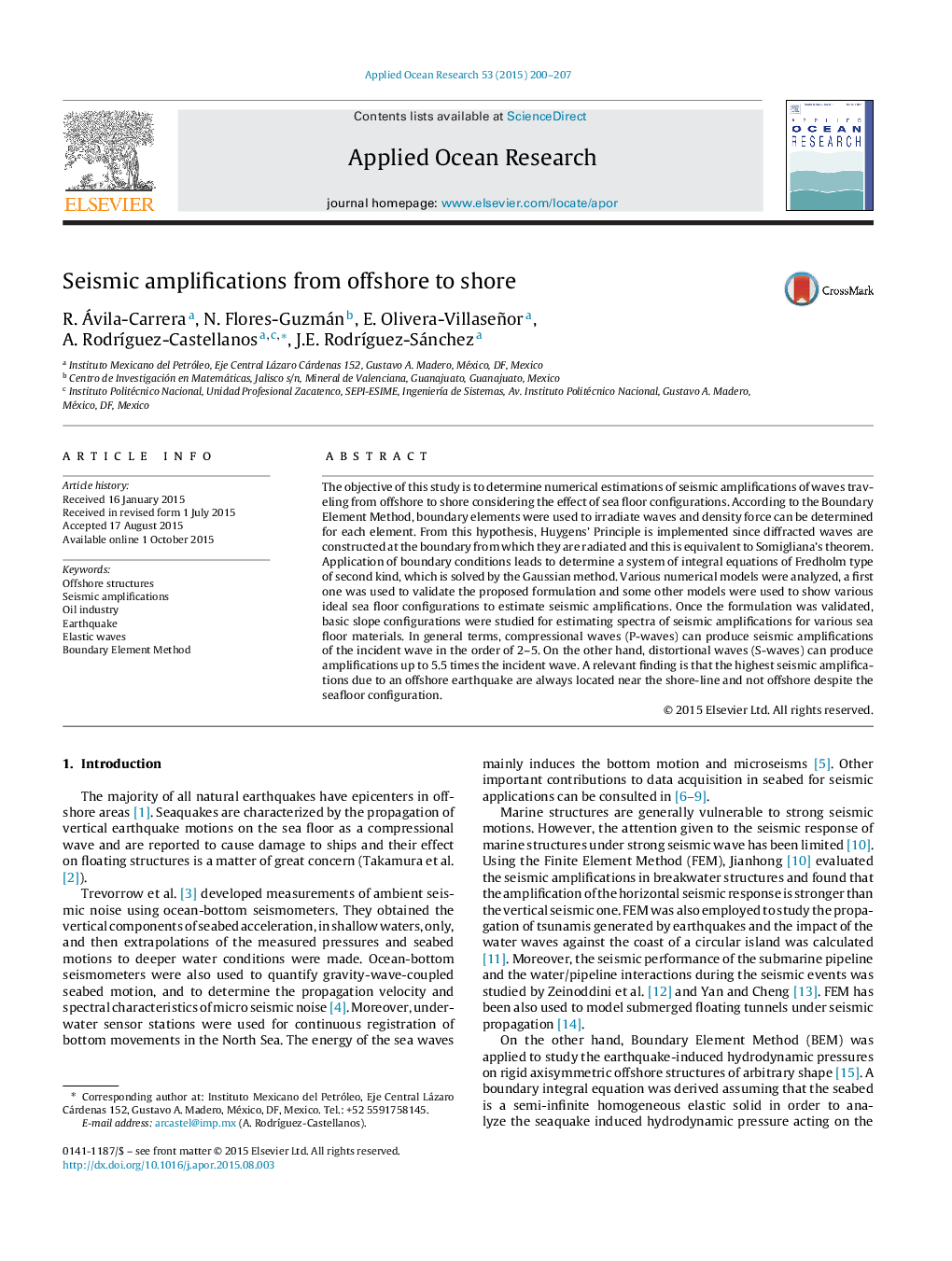| Article ID | Journal | Published Year | Pages | File Type |
|---|---|---|---|---|
| 1719913 | Applied Ocean Research | 2015 | 8 Pages |
Abstract
The objective of this study is to determine numerical estimations of seismic amplifications of waves traveling from offshore to shore considering the effect of sea floor configurations. According to the Boundary Element Method, boundary elements were used to irradiate waves and density force can be determined for each element. From this hypothesis, Huygens' Principle is implemented since diffracted waves are constructed at the boundary from which they are radiated and this is equivalent to Somigliana's theorem. Application of boundary conditions leads to determine a system of integral equations of Fredholm type of second kind, which is solved by the Gaussian method. Various numerical models were analyzed, a first one was used to validate the proposed formulation and some other models were used to show various ideal sea floor configurations to estimate seismic amplifications. Once the formulation was validated, basic slope configurations were studied for estimating spectra of seismic amplifications for various sea floor materials. In general terms, compressional waves (P-waves) can produce seismic amplifications of the incident wave in the order of 2-5. On the other hand, distortional waves (S-waves) can produce amplifications up to 5.5 times the incident wave. A relevant finding is that the highest seismic amplifications due to an offshore earthquake are always located near the shore-line and not offshore despite the seafloor configuration.
Related Topics
Physical Sciences and Engineering
Engineering
Ocean Engineering
Authors
R. Ávila-Carrera, N. Flores-Guzmán, E. Olivera-Villaseñor, A. RodrÃguez-Castellanos, J.E. RodrÃguez-Sánchez,
